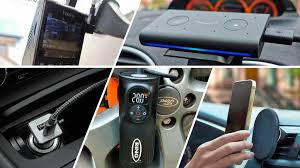Embarking on a long road trip is one of the most exciting ways to explore new destinations, make memories, and experience the open road. However, the thrill of adventure can quickly turn sour if your vehicle isn’t properly prepared for the journey. Ensuring your car is in top condition before hitting the highway not only guarantees a smoother ride but also helps avoid breakdowns and unexpected surprises along the way.
In 2022, with more advanced car technology, longer trips, and rising fuel prices, it’s more important than ever to ensure your car is ready for a long journey. Here’s your ultimate guide on how to prepare your car for a road trip in 2022.
1. Conduct a Thorough Vehicle Check
Before setting off, the first thing you should do is perform a general check-up of your vehicle. While modern cars come with advanced diagnostics, a manual check ensures you won’t miss anything crucial.
Key Checks:
- Engine oil: Check your oil levels and ensure the oil is clean. If it’s time for an oil change, get it done before the trip.
- Coolant: Check your coolant levels to avoid the engine overheating during long drives. Make sure to top it up with the right type of coolant.
- Tires: Inspect tire pressure and tread depth. Uneven tire wear or under-inflated tires can affect fuel efficiency and handling. Also, ensure you have a spare tire, jack, and lug wrench in case of emergencies.
- Brake system: Test the brakes for any unusual noises or poor performance. If you notice any issues, have them inspected.
- Battery: Check the battery’s charge and condition. Cold weather can be hard on batteries, so if yours is more than 3-4 years old, consider replacing it before your trip.
2. Update Your Car’s Software and Navigation Systems
In 2022, most cars come with advanced infotainment and navigation systems that are crucial for long-distance driving. Updating these systems before the trip will ensure you have access to the latest maps, safety features, and performance enhancements.
Actions to Take:
- Update GPS/Navigation software: Ensure your car’s GPS system is up-to-date, especially if you’re heading into unfamiliar regions. Many vehicles now allow over-the-air updates, so make sure your navigation system has the latest maps installed.
- Check connectivity: Ensure your car’s Bluetooth and Apple CarPlay/Android Auto (if applicable) are working, as they can help with hands-free navigation and calls.
- Over-the-air updates: Some vehicles (like Tesla) allow over-the-air software updates that can improve your car’s driving performance, safety features, and infotainment experience. Be sure to download any available updates before your trip.
3. Pack Essential Car Emergency Items
It’s always wise to be prepared for any unforeseen circumstances on the road. While breakdowns are rare, having an emergency kit in your car can be a lifesaver in case you need it.
What to Pack in Your Emergency Kit:
- First aid kit: Include bandages, antiseptic wipes, pain relievers, and any personal medications you may need.
- Jump cables: In case of a dead battery, jump cables are essential for getting back on the road quickly.
- Tire repair kit or sealant: If you get a flat tire and don’t have time to change it, a tire repair kit can temporarily fix the issue.
- Flashlight: A reliable flashlight with extra batteries is vital if you’re stuck in the dark.
- Water and snacks: Having bottled water and non-perishable snacks can help you stay hydrated and energized during long stretches of driving.
- Car charger and power bank: Ensure you have a charger for your phone, especially if you rely on it for navigation.
4. Ensure Your Car’s Air Conditioning and Heating Are Functional
Having a working air conditioning or heating system is a must for long road trips. Whether it’s the blistering heat of summer or the cold weather during winter months, your comfort should be a priority.
What to Do:
- Test the A/C or heater: Before the trip, test your car’s climate control system. If it’s not functioning properly, have it repaired before hitting the road.
- Check the cabin air filter: A dirty air filter can make the A/C less effective and lower air quality inside the vehicle. If it’s due for a replacement, swap it out before your journey.
5. Inspect and Top Up Fluids
Your car’s engine and other systems depend on several vital fluids to operate smoothly. Ensuring these fluids are at optimal levels can help prevent mechanical issues during your road trip.
Fluids to Check:
- Transmission fluid: For smooth gear shifting and efficient performance, check the transmission fluid, especially in manual cars or those with automatic gearboxes.
- Power steering fluid: This fluid ensures your car’s steering is smooth. Low levels may cause difficulty when turning.
- Windshield washer fluid: This is especially important for keeping your windshield clean and free of bugs, dirt, or debris that could obscure your view while driving.
- Brake fluid: Low brake fluid can impact braking performance, so be sure to top it up.
6. Plan Your Road Trip in Detail
Planning your route and knowing your stops in advance can make your journey more enjoyable and less stressful. With new technology in 2022, this is easier than ever.
Things to Consider:
- Fuel stops: Check your car’s fuel efficiency and plan stops accordingly. It’s a good idea to know where gas stations are along your route, especially if you’re traveling through remote areas.
- Rest stops and hotels: If your road trip is multi-day, research rest stops, diners, or hotels in advance to ensure you’re taking breaks and not driving for hours on end.
- Weather conditions: Check weather forecasts along your route to prepare for potential adverse conditions, such as rain, snow, or extreme heat.
7. Clean Your Car Inside and Out
While this may seem like a cosmetic task, cleaning your car before a road trip can actually improve its performance and comfort. A clean car provides a more pleasant driving experience and prevents dirt buildup in areas that could affect functionality, like the brakes or windshield.
What to Clean:
- Interior: Vacuum seats and carpets, wipe down surfaces, and clear out any unnecessary items to maximize space and comfort during your trip.
- Exterior: Wash the car to remove dirt, grime, or bugs that might obstruct your view. Also, check the headlights, taillights, and windshield for dirt or cracks that could impair visibility.
8. Check Tire Pressure and Alignment
Proper tire pressure is essential for safe and efficient driving, especially on long trips. Incorrect pressure can reduce fuel efficiency and cause tires to wear unevenly or even blow out.
Tip:
Before leaving, ensure all tires are properly inflated according to the manufacturer’s recommended pressure (usually listed in your car’s manual or on a sticker inside the driver’s side door frame). Additionally, get your tire alignment checked if your car pulls to one side.
9. Ensure Your Car Insurance and Documents Are Updated
Before you hit the road, ensure that your car insurance is up to date and that you have all the necessary documents with you.
What to Check:
- Insurance coverage: Verify that your insurance covers long-distance travel, accidents, and emergencies. If you’re traveling internationally, check for coverage that extends to other countries.
- Registration and license: Make sure your car’s registration is valid, and carry your driver’s license, car registration, and any other necessary documents with you.
10. Make Sure Your Car Is Well-Rested
If you’ve been using your car frequently before the trip, it’s essential to let it rest the night before your journey. Ensure it’s parked in a cool, dry place to prevent any potential issues caused by extreme weather conditions.
Bonus Tip:
Take your car for a short drive before embarking on a long journey to ensure everything is functioning properly and that you’re comfortable with the vehicle’s handling.
Conclusion
Preparing your car for a long road trip in 2022 requires more than just ensuring the gas tank is full. With the latest automotive technology and systems, it’s important to stay ahead of potential issues by checking and maintaining various parts of your vehicle. From basic maintenance tasks like checking fluids and tires to leveraging advanced tech like updated navigation systems, a little preparation can go a long way in making your road trip a safe, comfortable, and enjoyable experience. Safe travels!
0




